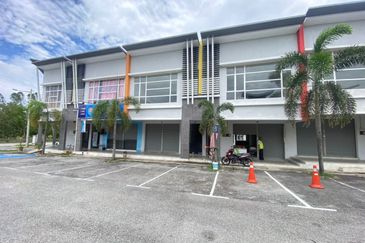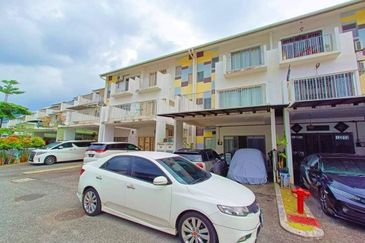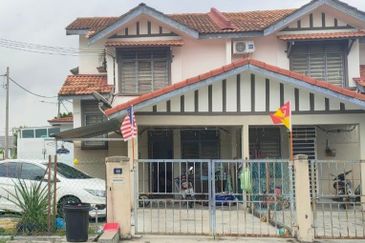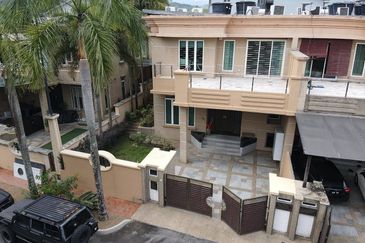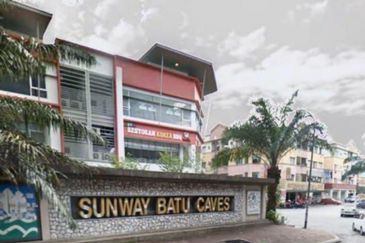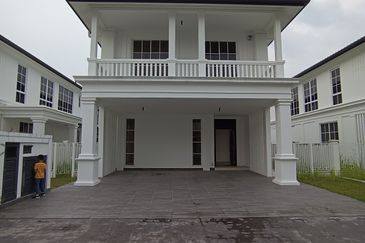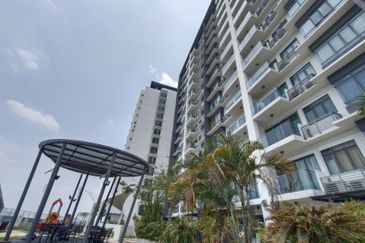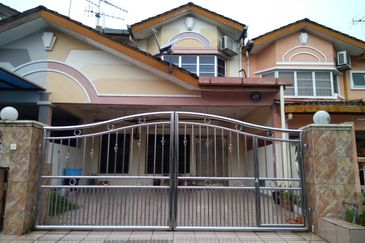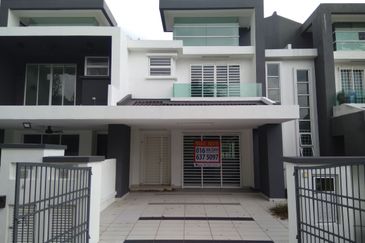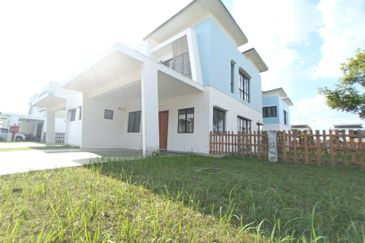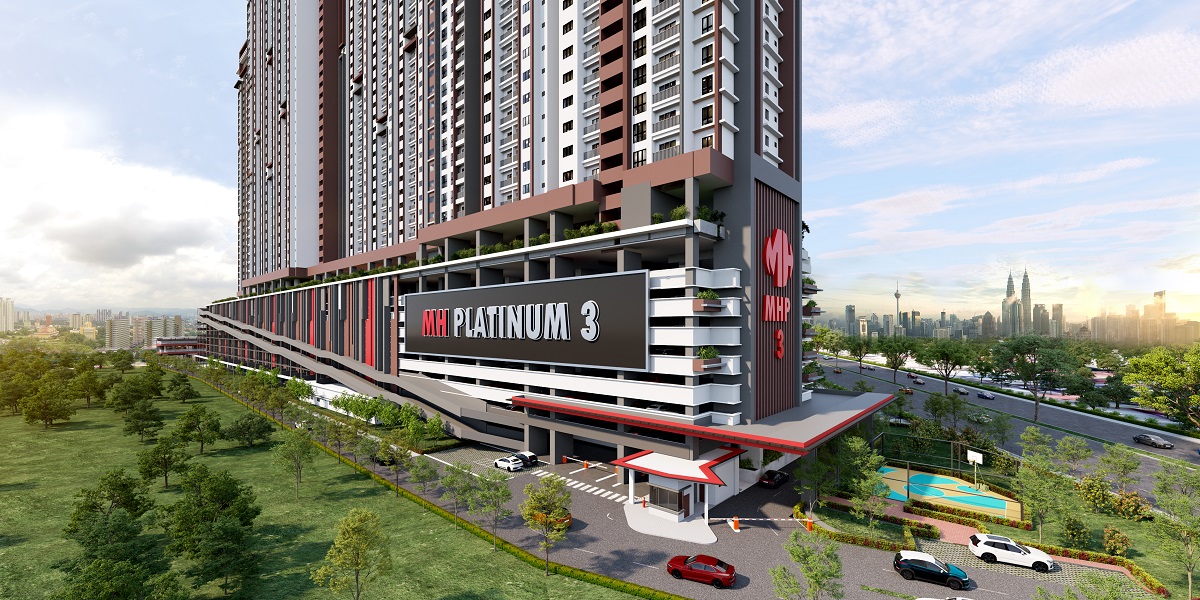Due to time constraints, speakers at The Edge Investment Forum on Real Estate 2009: 'Residential property values: How low can we go?' were unable to take all the questions from the floor. Participants were invited to send in additional questions and indicate to whom they were directed. The responses are published below:
Previndran Singhe
H M Chiew:
Did you or your clients invest in YTL’s D7 or D6 project in Sentul? Do you think the project has potential?
Previndran: Yes, they did. In fact, we also looked at it but were a bit too late on the lots we required. Yes, I think it has, being the first proper office-type development in Sentul.
Can you refer me to your expatriate rental department? I have a condo to let in Bangsar.
Kindly call Antoine Commare at (03) 2092 2008.
Adrian Wong:
Most of the speakers seldom or never mention the property outlook for the Cheras area... what are the reasons?
Previndran: Cheras is a mature location, (and it is a) given it will do well. I think Cheras is a good investment, especially landed developments.
How do you think property in the Cheras area will fare in five years? (I am staying in Taman Desa Bukit Cahaya Cheras (MBSB project), somewhere around Damai Perdana Cheras).
Landed developments will hold value with growth in selected developments.
I bought my house at RM170,000 four years ago. It is freehold, at 18ft x 65 ft, with renovations costing around RM100,000. The bathroom and kitchen have been extended. How much (prediction) would it be if I sold it in 5 to 10 years time?
Sorry, I don’t have the skills for a five-year projection.
I intend to purchase a 2-storey terraced corner lot, maybe in Cheras Hartamas or Taman Segar Bukit Jaya in the next 5 to 10 years, for my occupation. Are these areas good for capital appreciation?
Yes, they are, but I still prefer the more mature developments with lots of amenities.
Is the Sky Residences worth a buy? What about its address then?
Truly worth a buy. It might be in Kampung Baru, but it has got superb accessibility and it is brought to you by a branded developer.
Kumeran:
I have invested in a new condominium, Kiara 1888, in Mont’Kiara. This is a new player in Mont’Kiara and the location is pretty good... it is beside the Garden International School. The purchase price was about RM350 psf. What is your opinion on this new development and do you see any solid capital appreciation for condos in this area from 2010 onwards?
Previndran: I think the values will be flat and I do not see any solid appreciation, like for most condos, but what you will get is good returns rent-wise.
During the forum, a lot of time was spent talking about the KLCC area and other safe havens like Bukit Damansara. What about Mutiara Damansara? Super linked houses here are priced at RM1 million upwards and they don’t show any sign of easing.
Mutiara Damansara is a superb development. Boustead truly outdid itself here. I do not see prices going down. Instead, I see prices inching up.
What is your opinion on the leasehold area in Damansara Perdana? Good investment? Should I dispose of in a few years, particularly Metropolitan Square condo where Citibank is located?
For Damansara Perdana, stick to commercial and landed residential that will be coming soon as I don’t see strong value movement on the high-rises. As for Metropolitan Square, try to retain for rental income, as good tenants in the building will attract more good tenants in the future.
Andy:
Is it good to invest in the following projects: Suasana Bangsar; Plaza Damas 3 serviced apartments; Setia Walk (Puchong) high-rise apartments; Jade Hills Bungalow by Gamuda; and Hijauan Residence by Mah Sing?
Previndran: Suasana Bangsar — resounding yes; Plaza Damas 3 serviced apartments — be selective on the units; Setia Walk (Puchong) high-rise apartments — resounding yes; Jade Hills Bungalow by Gamuda — resounding yes. Hijauan Residence by Mah Sing — yes.
Wong Pin Siong:
Are the condominiums in Bangsar South developed by UOA an attractive investment?Previndran: Yes.
Horlic Lim:
My information:
Serviced apartment purchased: Casa Suites service apartment
Developer: Dijaya
Location: Damansara Intan (between Ken II and Tropicana Mall)
Size and rooms: 821 sq ft; 1+1
Price purchased from developer: RM235,900 with 10% downpayment
Loan: CIMB Bank Flexi Loan (BLR at 1.5% for whole tenure), monthly instalment RM1,137 (based on BLR 6.75%)
Purchase date: July 2007
VP handover date: May 2008
Move-in cost: About RM20,000 (everything, like light fittings, furniture, electrical equipment, and so on)
Source/type of income: Fixed salary
My strategy: Prefer to buy apartment or condo (higher price, smaller unit, but good location) for the first few properties because need them to generate positive cash flow instead of locking in my money in landed property (will only be able to buy landed property at not-so-good locations) which normally do not carry good rental price.
Subsales transaction price: RM380,000
Rental market: Six months ago at RM2,300, currently about RM2,000
My question: Based on the capital appreciation and rental income consideration, should I sell it off or rent out?
Previndran: Sell and recycle the money. I don’t see any more upside value.
The Edge:
Where are we in the property cycle? Are we at the bottom or near bottom?
Previndran: Bottomed out.
More units are coming into Mont’Kiara and the KLCC. What does this mean for the older ones?
Older ones will need to go through gentrification in order to be relevant, as otherwise it will be hard to retain tenants. For example, Eng Lian did a great job with Sri Wangsaria in order to keep the development relevant in Bangsar.
Ho Chin Soon
Adrian Wong:
Is S P Setia’s high-end condo project Sky Residences considered part of the KLCC enclave?
Ho: I would not consider Sky Residences as strictly within the KLCC enclave. Sky Residences is just at the edge of the Golden Triangle and its location is unique. However, we cannot discount the fact that a branded developer like S P Setia can create a branded product which will have a demand and thus stretch the definition of where exactly the Golden Triangle should end or begin.
The land size of Sky Residences is also relatively large, at almost six acres, and as such quite sizeable, and access to Jalan Tun Razak is definitely a plus point. I believe the proposed pricing for Sky Residences has already factored in its location as being on the outskirts of the Golden Triangle.
Jeff:
What is your opinion of the KL-Imbi properties in Jalan Padang and Jalan Walter Grenier? Any chance of urban redevelopment since DBKL has rezoned the area for mixed commercial use?
Ho: The problem is there would be too many individual shop owners. For an effective and sizeable development which can generate good profits, a developer has to accumulate many parcels and then amalgamate them for redevelopment to be meaningful. Thus, parties on the ground buying up parcels tend to be low profile and secretive until such time when they have reached their objectives. The said location is very good for hotels, entertainment centres and boutique shopping centres. Several parties have already started to accumulate shophouses for redevelopment in the future.
Horlic Lim:
Glomac Damansara project’s serviced apartments are expected to be launched either at the end of this year or early 2010 at around RM600 to 650 psf. Is the price reasonable?
Ho: The location is quite good and in an established mature neighbourhood. You also have the Tropicana City Mall nearby. The site is adjoining Desa Kiara Condominium. Also nearby is a medical specialist centre. I have no problems whatsoever with the location. The question is then a matter of pricing. Presently, RM600 psf sounds reasonable but will that be the price at the end of this year or early next year? Again, what are the features and finishes for the project? If the specifications are good and top class and if the market improves, then probably the price may go up. Let us wait and see.
Wong Pin Siong:
Are the residential properties in Kota Kemuning, especially those in Kemuning Utama, worth buying for investment?
Ho: Generally, landed residential properties (compared with commercial properties) will not offer rents and yields that are as good. However, there may be a good chance for good capital appreciation. Kemuning Utama is at the edge of the first-tier locations of the Klang Valley. You might want to consider it as first-tier due to the Kesas Highway.
The Edge:
Which are the locations in the second-tier that have the most potential of being elevated to first-tier?
Ho: In some of my talks in seminars, I have considered certain locations to be first-tier locations even though they are located within the second-tier as indicated in our Klang Valley maps. These locations are those that are connected and linked to highways that bring the residents to Kuala Lumpur and Petaling Jaya. Examples would be Setia Alam with access to the New Klang Valley Expressway, Alam Impian with access to the Kesas Highway and Melawati fronting the Middle Ring Road II (MRR2).
Chris Tan
Jeff:
I liked your opinion on the landlords’ association but I don’t think it is workable if it is not coming from the authorities (Ministry of Housing and Local Government). Why don’t you propose to the ministry to set up a governing body to manage rental bonds and disputes on tenancy? I propose the amendment of the existing laws and that all tenancy issues be handled directly by this new set-up. This will avoid the lengthy court processes, if problems arise. Also, with the accumulation of tenants information, they can sell the information to all landlords in the future, like how the banks are paying for CTOS search right now.
Tan: Having a collective platform like the landlords’ association is always better than our individual lobbying of the authorities. Therefore, the creation of the landlords association is precisely catered to highlight these issues to the authorities. The setting up of a special tribunal to deal with all issues in relation to landlords and tenants, as you have suggested, is definitely part of the agenda of the landlords’ association.
There are models we can adopt from countries with similar jurisdictions, for example, Australia, Singapore and the UK. The landlords’ association can therefore adopt the best practices from these jurisdictions for a hybrid model that fits the Malaysian environment. A lot of research and lobbying are required for this purpose and it is definitely not within the individual resources of you and I alone. We therefore propose the setting up of a landlords’ association.
To maintain neutrality, the landlords’ association should not commercialise the information gathered and sell it like CTOS.
Wong Pin Siong:
What is the next course of action if a tenant refuses to move out after an eviction order is obtained?
Tan: The next course of action would be to seek the court’s directive to evict the tenant by force. Upon the landlord’s application, the court will order the bailiff to do the following:
a) To enter by force if the tenant refuses to allow entrance;
b) To remove all items not belonging to the landlord and place them in a warehouse of the district police station; and
c) To be assisted by a guardian (normally police officer) during the process.
Then, arrangements will be made with the court’s bailiff to execute the eviction order accordingly.
The Edge:
Since being a landlord can be such a nightmare, with the law favouring tenants, would you be a landlord yourself? Why?
Tan: Having nightmares does not prevent you from sleeping, for sure. Similarly, tenants from hell are rare. If the return and yield from the property investment remain attractive and there are ways to prevent and manage this nightmare situation, as we have suggested, it makes sense to be a landlord. With a growing population and scarcity of land, real estate investments always prevail in the long run.
The landlords’ association is a good idea but is there a possibility that the idea will be just a pipe dream?
The landlords’ association is definitely not a new idea and has been mooted locally in the past. However, there is lack of a champion to make this happen. We, through our Hi5er Club initiative, would like to put ourselves forward to support and sustain the idea of a landlords’ association and hopefully, with your keen participation, we can make it happen.
We would like to point out that this initiative remains a self-help. Therefore, it is relative to how much effort that you and I are investing in this proposition. In the next quarter, the Hi5er Club is ready to carry the baby. Your participation shall determine the sustainability of this project and beyond.
How can one be sure that the information shared among landlords won’t be used to ‘steal’ tenants?
There are pros and cons in everything and the key, as we presented to you last Saturday (in the forum), is always to achieve the equilibrium. We live in a capitalist society and competition is always encouraged.
The benefit of making informed choices through information sharing is therefore shared not just among the landlords but the tenants as well. We should not be deterred by healthy competition and instead believe that progress can be achieved though such competition.
Furthermore, your interest as a landlord against early termination can be protected within the scope of the tenancy agreement while the landlords’ association can always have a code of ethics to be observed by its members.
Kam Wei Tsung
Adrian Wong:
Speakers seldom or never mention about the property outlook in the Cheras area, why?
Kam: Cheras, Kepong and Puchong at one time were about the same, but today Puchong and Kepong property prices outpaced Cheras, mostly due to more demand in those areas but new highways are making Cheras well-connected and easier to access.
How do you find property in the Cheras area in five years time? (I am staying in Taman Desa Bukit Cahaya Cheras (MBSB project), somewhere around Damai Perdana Cheras).
Definitely, property prices will edge up but we need to compare with other localities, and supply and demand will have to be assessed.
I bought my house at RM170,000 four years ago, freehold, 18 x 65, renovations around RM100,000, with extensions to bathroom and kitchen, so how much (prediction) if I sell it in five to 10 years time?
I won’t be able to predict the price but how I will do it is, if five years later the price is RM200,000, then I would like to buy it at RM150,000 or less. I normaly make my money buying at the right price and my appreciation is already in my pocket.
I intend to purchase a double-storey terraced corner lot maybe in Cheras Hartamas or Taman Segar Bukit Jaya in the next five to 10 years, for own living, so are these good areas for capital appreciation?
Yes, landed property normally appreciate better than apartments or condominiums and you need to compare with other possible offerings of similar types of property in the Cheras area to know the whole picture. Also, study other locations to get a better point of reference.
Is the Sky Residences property worth buying? What about its address then?
I would develop my individual game plan, identify my target market and then only identify my target area to invest. The Sky Residences would cater more for high-end tenants like expatriates, so if you target expatriates, you need to do further research and identify their favourite places of residence, namely, KLCC area, Ampang, Bangsar, Damansara Heights and then decide whether the location of Sky Residences is a hot and preferred address.
Jeff:
You mentioned creating a community of property entrepreneurs. Is this how you managed to acquire so many properties in just a few years? Did you form a company to acquire, or in your personal name? Where do you normally get information on good buys; from word of mouth, agents, classifieds, auctions?
Kam: Yes, we formed this property entrepreneurs community which provides guidance, knowledge and mentoring to members to see property investment as a business and teach them the skills of property investing, habits and the mindset of a property investor. This enables them to know how to evaluate deals and analyse deals together and to have the confidence to go into deals together. After they have established their own property investment, game plan and have excess funds, they can participate in larger projects together and we normally set up a company (Sdn Bhd) to purchase the property.
We get to know of good buys by having established links to real estate agents and auctioneers and other channels over the years. You need time to build on these channels.
Wong Pin Siong:
Are the residential properties in Kota Kemuning, especially those in Kemuning Utama, worth buying for investment?
Kam: We would advocate knowing and developing your game plan first before embarking on purchasing a particular type of property. The game plan includes purchasing property for cash flow, capital appreciation, holding for long-term, mid- term or short-term, combination of BTK (Buy to Keep) or BTS (Buy to Sell) portfolio and others before even purchasing a particular property.
Horlic Lim:
My information:
Serviced apartment purchased: Casa Suites service apartment
Developer: Dijaya
Location: Damansara Intan (between Ken II and Tropicana Mall)
Size and rooms: 821 sq ft; 1+1
Price purchased from developer: RM235,900 with 10% downpayment
Loan: CIMB Bank Flexi Loan (BLR at 1.5% for whole tenure), monthly instalment RM1,137 (based on BLR 6.75%)
Purchase date: July 2007
VP handover date: May 2008
Move-in cost: About RM20,000 (everything, like light fittings, furniture, electrical equipment, and so on)
Source/type of income: Fixed salary
My strategy: Prefer to buy apartment or condo (higher price, smaller unit, but good location) for the first few properties because need them to generate positive cash flow instead of locking in my money in landed property (will only be able to buy landed property at not-so-good locations) which normally do not carry good rental price.
Subsales transaction price: RM380,000
Rental market: Six months ago at RM2,300, currently about RM2,000
Based on the capital appreciation and rental income consideration, should I sell or rent out?
Kam: If I were in your shoes, as I am a cash flow investor, I would do a top-up loan on this property at new market value of RM380,000 and have a new loan of RM342,000 (subject to getting banks valuation at RM380,000 and getting a new 90% margin of finance). Let’s say my current loan outstanding is RM210,000, then I would have RM132,000 as an overdraft account, and I will only pay interest if I use the funds in my overdraft account. In this manner, I will still be paying the similar RM1,137 per month and getting rental income at RM2,000, and thus a gross positive cash flow of RM863.
Therefore, I don’t need to sell the property and I establish a RM132,000 overdraft account and I still hold on to this property and getting positive cash flow. Always remember your wealth is created in BTK portfolio over the longer run and BTS portfolio is to generate seed money to reinvest into BTK portfolio. For me, I normally buy and seldom sell unless the offer is super fantastic.
Lau:
Is investing in a real estate investment trust (REIT) a good idea? Say, I have RM50,000, should I use this cash to part-finance the purchase of a house bought as an investment or invest in a REIT? My main objective is to have a steady flow of income. (REIT distributes 90% of its income from the rent collected as dividend to unit holders.)
Kam: As a property investor, I constantly think of the “concept of best use” for my property. So, I like to invest in physical properties that I can add value to and in this case REITs won’t qualify as I can’t personally add value to them.
The Edge:
One of your recommendations was to invest in student housing, but students are not often the best of tenants as they may not maintain the property. Your comments?
Kam: We choose our student tenants, we run through some interview questions before taking them on as our tenants, thus reducing problematic student tenants.
Tell us your top three investments (type and how much, other relevant details) so far.
We would advocate knowing and developing your own game plan first before embarking on purchasing a particular type of property. This includes purchasing property for cash flow, capital appreciation, holding for the long term, mid term or short term, deciding on a combination of BTK (buy to keep) or BTS (buy to sell) portfolios. One needs to understand the whole big picture on property investing and it would not be appropriate for me to name you the investments as property means different things to different people at different stages in their lives. For example, a person in his 30s may view property investment as buying his own home, in his 40s may view property investment as a part-time business giving additional income, in his 50s may view property investment as purely retirement income. So by not knowing so many variables, I will not want to name the investment as it may give a wrong or misleading outcome for you.
In your talk, you have identified places like Jalan Pudu and anywhere downtown as addresses to invest in. However that may be too expensive for first-time investors. Perhaps you can suggest other locations?
Actually, I do not normally recommend hot areas to invest in as it very much depends on each individual’s capacity and game plan on properties and risk tolerance and whether you’ll be holding for the long term, mid term or shor term. So, if Jalan Pudu is pricey, you can look at another property within your budget.
So, shall we buy now or wait?
First, we need to have a personal game plan on properties, whether we plan to buy a particular type of property and if it hits 50% below market value. We would buy as we have set out in our plan. We have a big margin of safety as we purchase it at 50% below market value. We won’t buy if the price is 30% below market. It’s important to stick to your plan.
Eric Ooi
Wong Pin Siong:
Are the condominiums in Bangsar South, developed by UOA, an attractive investment?
Ooi: Park Residences in Bangsar South have shown commendable sales performance since its launch. The Begonia block, priced between RM320 and RM380 psf, was sold out, while the Acacia block, priced from RM420 psf, is now 50% sold.
The rents for Park Residences are expected to range between RM2 and RM2.50 psf, with yields ranging between 7% and 8%.
CSP:
How does one assess the yearly insurance value of a bungalow with built-up of over 5,500 sq ft, with good finishes, and a 5-storey shop unit with lift. The insurance company indicates a figure to us but how do we know whether the properties are under-insured? Is it calculated on the cost of construction on a sq ft basis and if so, what is it with today’s prices of construction materials?
Ooi: The insurance value is basically the replacement cost of the new property to be insured. The replacement cost is essentially the total current construction cost of the building, which varies depending on its construction, structure, finishes and so on, and we recommend that you seek the advice of a quantity surveyor or cost consultant.
The Edge:
Where will you personally put your money, in what kind of property, and why?
Ooi: For high-end condominiums, those in Bangsar and Damansara Heights, as supply is limited and rent demand is good. Furthermore, these are popular addresses.
You mentioned that the units due for completion this year in KLCC area are coming onstream at a wrong time. So, how will they impact occupancy and rents there?
Rents will be compressed as more supply enters the market. Occupancy of some of the condominiums may be affected too, especially the larger units, as there are fewer expatriates with high rent budget in today’s economic environment.
So, is it still a good time to buy properties in KLCC? Or would the surburbs be a better choice?
Good time now to prospect for good buys in prime developments.
Stephen Tew
Jeff:
We acquire and manage properties on a very small scale, compared to your quantum, and thus would like to seek your opinion on how we can grow bigger from a small portfolio. We are now facing an obstacle to growing. Issues, such as good properties are not easy to find (therefore, it takes time). Existing properties give you positive cash flow, but that is not sufficient to fund new acquisitions. Normally, we use internally generated funds (that is, shareholders’ own resources) unless we have to refinance the existing portfolio and be higher geared.
However, by doing so, we are committing higher repayments to existing portfolio and thus fall into negative cash flow. This is very risky if we don’t manage it properly. How can we turn ourselves into a sizeable property investment group with healthy cash flow?
Any good recommendations of industrial lots with 8% yield and above? Such as in Glenmarie and Subang hi-tech?
What do you think of Paramount’s Surian industrial park that is offering 10% discount for early bird buyers? At a nett purchase price of RM2.7 million, do you think we can generate RM18,000 rent?
Tew: Yes, refinancing to grow can be risky unless your yields are very high and you have multiple tenants. Unfortunately, during the early years into your investing, you will need to sell in order to recycle your capital quickly to generate a higher return on capital. You should only keep for long-term growth when you have reached a certain mass.
Recommended locations for industrial investments would be PJ, Shah Alam and Klang North Port.
The Edge:
You specialise in commercial and industrial properties but if you were to invest in a residential property, where will you put your money?
Tew: For residential, I would put my money in Damansara Heights.
You have stated that industrial property yields range between 8% and 10%. Can this still be expected during these times?
Yes, especially in Shah Alam and Klang North Port.
Domestic versus multinational corporation (MNC) tenants — which is better, and why?
You buy domestic-tenanted locations with the aim to sell, and you buy MNC-tenanted locations with the aim to collect rent.
You mentioned in your talk that now is not a good time to invest in vacant industrial land. Why?
Industrial land prices have been moving up quite a fair bit for the past many years and construction costs have also been rising. Rents have not risen much. Therefore, yields are being compressed. The market for industrial land today is merely for purchase by actual end-users who will buy to use not as an investment, so the market is slower. Buying vacant land is also very difficult to finance if you don’t have a very strong track record.
This article appeared in City & Country, the property pullout of The Edge Malaysia, issue 750, April 13-19, 2009.
TOP PICKS BY EDGEPROP

Eco Botanic
Iskandar Puteri (Nusajaya), Johor

Taman Nusa Sentral
Iskandar Puteri (Nusajaya), Johor

Hijayu 3D Alwinix & Alconix Community Park
Seremban, Negeri Sembilan
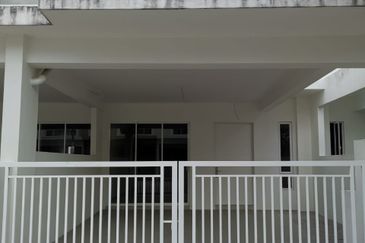
Ara Sendayan @ Bandar Seri Sendayan
Seremban, Negeri Sembilan
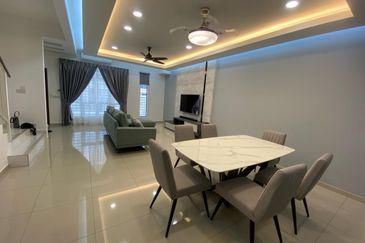
Springfield Residences @ Setia EcoHill 2
Semenyih, Selangor

